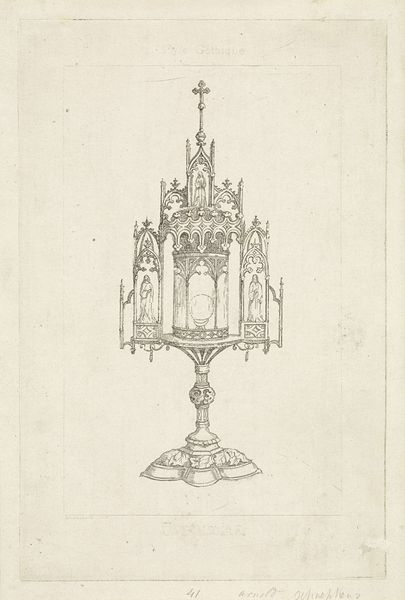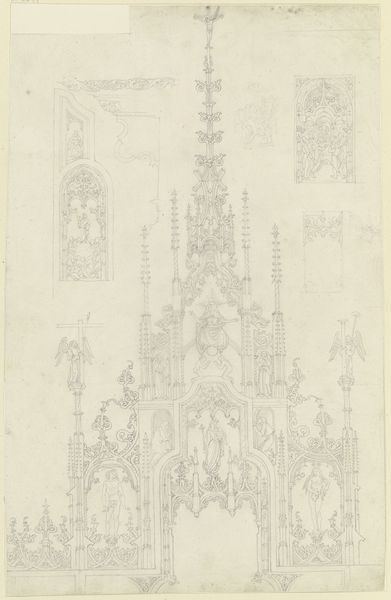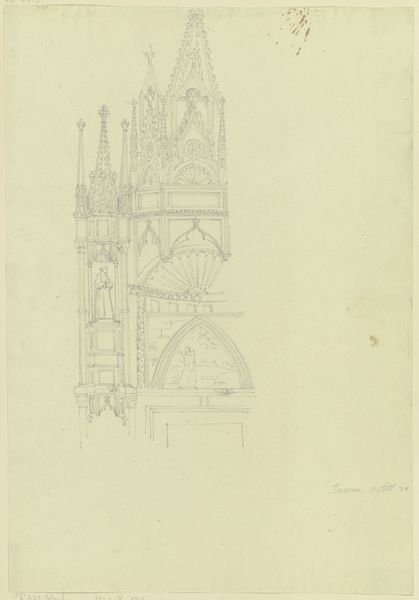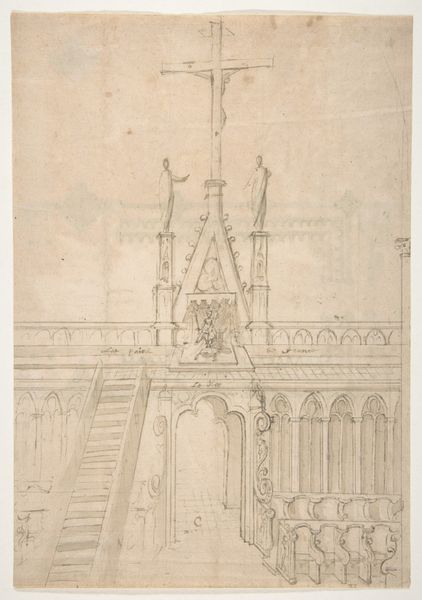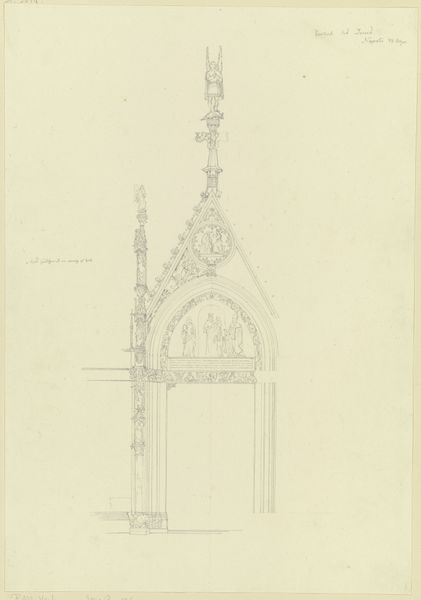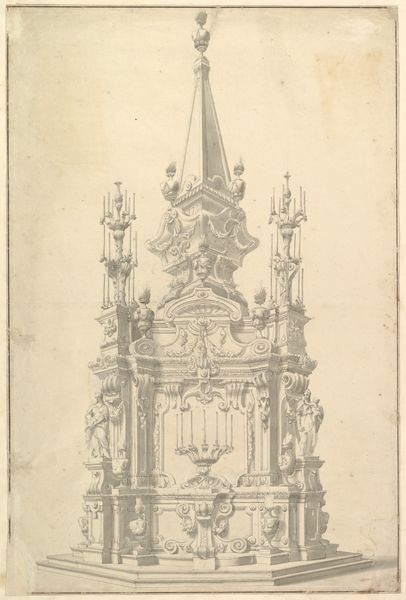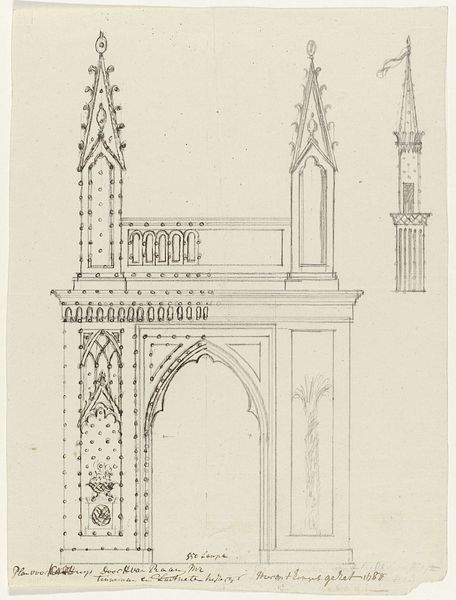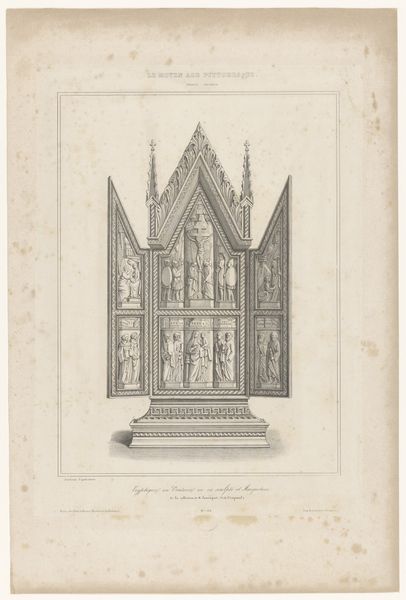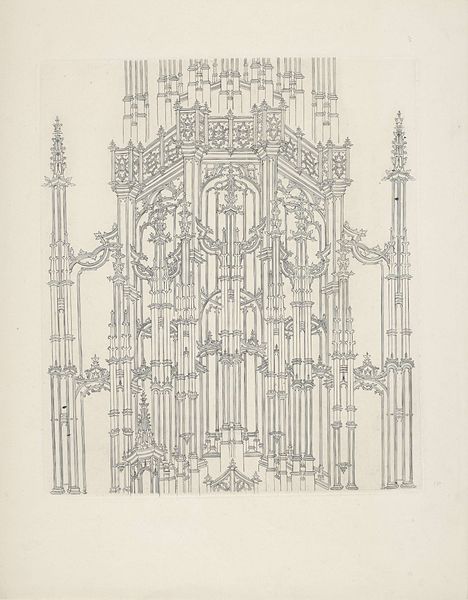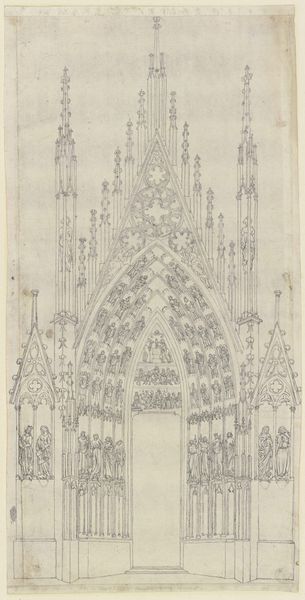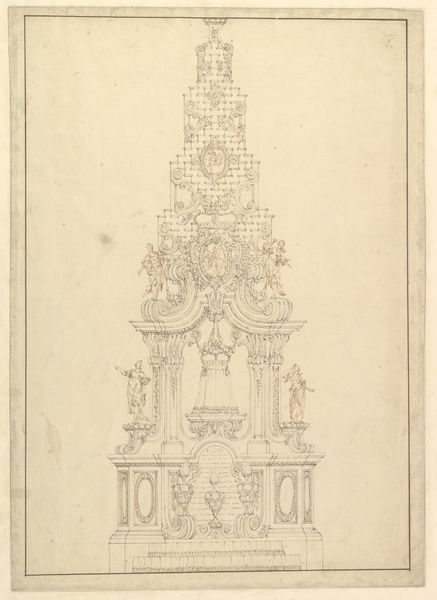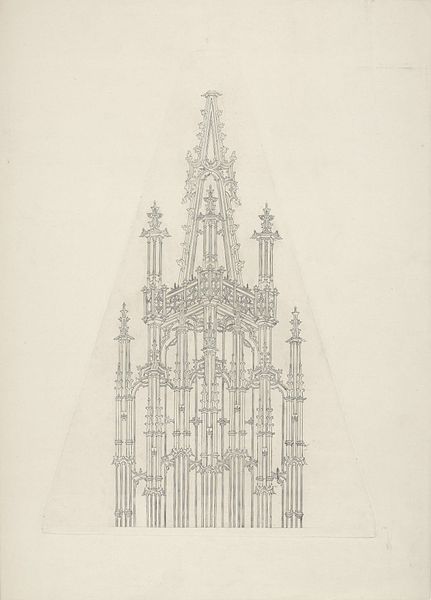
drawing, paper, ink, pencil, architecture
#
drawing
#
16_19th-century
#
medieval
#
gothic
#
paper
#
form
#
ink
#
pencil
#
line
#
architecture
Copyright: Public Domain
Curator: Right now, we are looking at a drawing housed here at the Städel Museum called "Gothic retable". Karl Ballenberger completed it sometime during the 16th to 19th century using pencil, ink, and paper. It looks like it was drawn from life? Editor: What immediately strikes me is how delicate the line work is. There’s almost a fragile, ephemeral quality to the structure despite its rigid form. Curator: Yes, that tension is everything, isn’t it? A retable, traditionally a permanent fixture, monumental even, reduced to these elegant, suggestive lines. You can almost feel Ballenberger tracing not just the object itself, but something more, like the fleeting presence of faith itself. Editor: Or the church. Thinking about gothic architecture always brings to mind power structures—religious, economic, patriarchal. The height of the retable, reaching for the heavens, speaks to a very hierarchical worldview. The light, though… the way the architecture filters light was no accident, a very strategic feature in gothic times. Curator: Oh, absolutely, you get that sense here. This reminds me of light streaming through stained glass—this delicate scaffolding practically vibrates with it, even rendered in simple pencil strokes. It’s quite an evocative feat, no? To translate such imposing grandeur into such an intimate form. It's almost as if he wants to contain the divine within his sketch, and share that intimate knowledge. Editor: Absolutely intimate but also incomplete. We're missing so much here. A building like this wasn’t simply built but designed by powerful entities to influence how we behave in particular spaces that facilitate how power should work. The austerity of line, this retrained artistic response has historical relevance, I wonder about other historical and social tensions—such as class dynamics during gothic eras. Curator: That resonates deeply. What he chooses to omit, is perhaps, more telling than what he meticulously renders. As in, this ethereal sketch prompts so much inquiry. And for me it serves as a stark reminder that behind even the most awe-inspiring displays of faith lies the humanity, frail, yearning, ever-questioning, which brings an almost, refreshing sensibility to this artwork, to me at least. Editor: In the end it boils down to this—while its aesthetic simplicity grants freedom for interpretations it also limits by disembodying historical roots in broader political contexts of social norms which governed human behavior at any point in time of that particular architectural design. Thank you for your perspective, and allowing to share my reflection, it was illuminating.
Comments
No comments
Be the first to comment and join the conversation on the ultimate creative platform.
